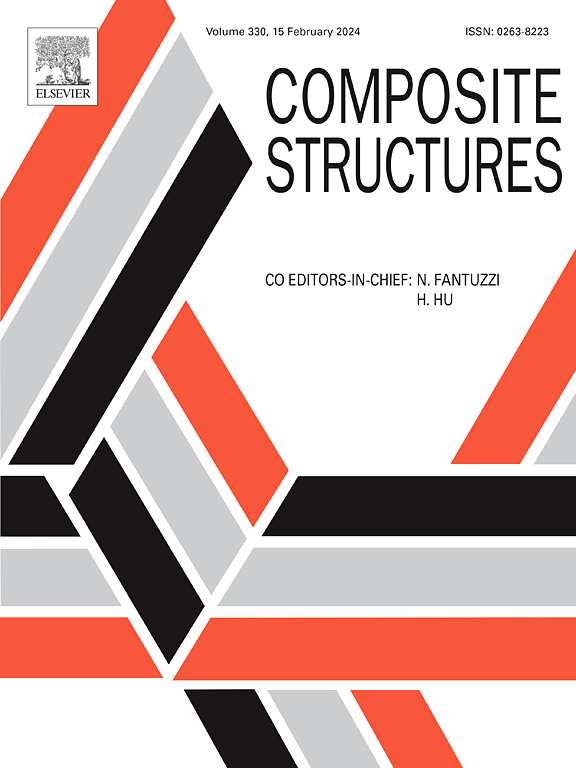时变聚合物基复合材料的本构建模:将粘-超弹性模型纳入微力学框架
IF 6.3
2区 材料科学
Q1 MATERIALS SCIENCE, COMPOSITES
引用次数: 0
摘要
由于聚合物基体的非线性时变特性,在高应变率下准确建模碳纤维增强聚合物复合材料(CFRPs)的应力应变响应仍然具有挑战性。在这项工作中,我们开发并验证了一种新的基于微观力学的本构模型,该模型首次将单松弛组分粘超弹性公式(也称为内部状态变量模型)集成到单元法(MoC)中。为了考虑纤维-基体界面处剪应力集中的影响,在基体超应力项中引入了一个标度参数。对于脆性热固性基体,采用退化的伪拉伸屈服应力来表示加载早期的界面脱键。为了捕捉碳纤维材料明显的非线性应力-应变特性,在基体流动规则中采用单调递增的抗力项。该模型成功地预测了三种复合材料(包括热塑性和热固性基复合材料)在不同应变速率下的离轴拉伸响应,碳纤维模量范围为200 ~ 300 GPa。这一有利的验证表明,具有聚合物基体多个松弛组分的更全面的粘超弹性配方可以很容易地结合到当前的框架中,从而能够在更高应变速率下准确预测cfrp。本文章由计算机程序翻译,如有差异,请以英文原文为准。
Constitutive modelling of time-dependent polymer matrix composites: Incorporating a visco-hyperelastic model into the micromechanical framework
Accurately modelling the stress–strain response of carbon fiber reinforced polymer composites (CFRPs) at high strain rates remains challenging due to the nonlinear time-dependent behavior of the polymer matrix. In this work, we develop and validate a new micromechanics-based constitutive model that, for the first time, integrates a single-relaxing-component visco-hyperelastic formulation, also called internal state variable model, into the method of cells (MoC). To account for the effects of shear stress concentration at the fiber–matrix interface, a scaling parameter is introduced in the matrix overstress term. For brittle thermoset matrices, a degraded pseudo tensile yield stress is implemented to represent interface de-bonding during the early loading stage. To capture the pronounced nonlinear stress–strain characteristics of CFRPs, a monotonically increasing resistant stress term is employed in the matrix flow rule. The proposed model successfully predicts the off-axis tensile responses at various strain rates for three kinds of composites, including both thermoplastic and thermoset matrix composites, with carbon fiber moduli ranging from 200 GPa to 300 GPa. This favourable validation indicates that a more comprehensive visco-hyperelastic formulation with multiple relaxing components for the polymer matrix can be readily incorporated into the current framework, thus enabling accurate predictions for CFRPs at higher strain rates.
求助全文
通过发布文献求助,成功后即可免费获取论文全文。
去求助
来源期刊

Composite Structures
工程技术-材料科学:复合
CiteScore
12.00
自引率
12.70%
发文量
1246
审稿时长
78 days
期刊介绍:
The past few decades have seen outstanding advances in the use of composite materials in structural applications. There can be little doubt that, within engineering circles, composites have revolutionised traditional design concepts and made possible an unparalleled range of new and exciting possibilities as viable materials for construction. Composite Structures, an International Journal, disseminates knowledge between users, manufacturers, designers and researchers involved in structures or structural components manufactured using composite materials.
The journal publishes papers which contribute to knowledge in the use of composite materials in engineering structures. Papers deal with design, research and development studies, experimental investigations, theoretical analysis and fabrication techniques relevant to the application of composites in load-bearing components for assemblies, ranging from individual components such as plates and shells to complete composite structures.
 求助内容:
求助内容: 应助结果提醒方式:
应助结果提醒方式:


